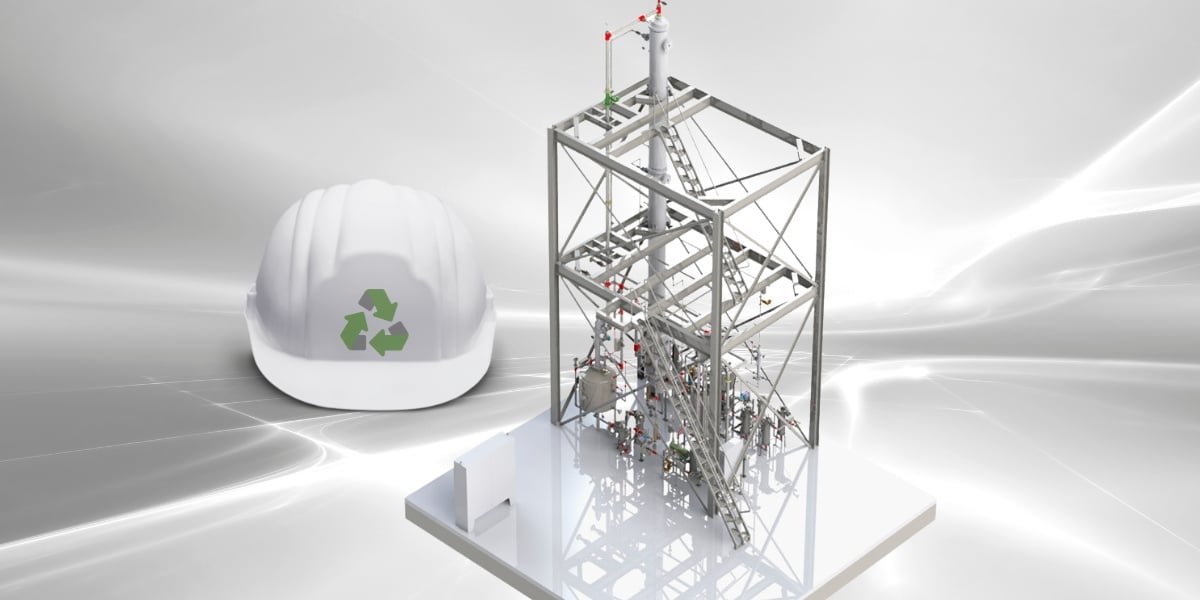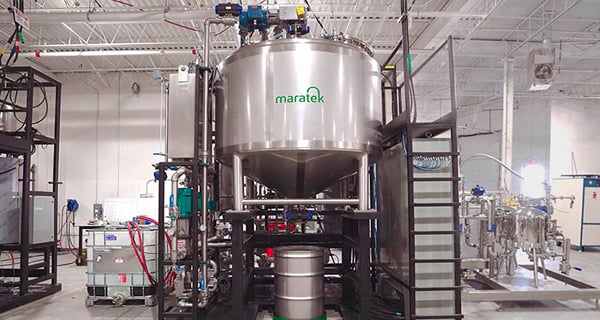Solvent Recycling: A Technical Introduction to Fractional Distillation
 Numerous industries generate substantial volumes of solvent waste as a natural byproduct of their daily operations. While disposal is a common approach for handling this waste, it comes with several drawbacks, including high costs and potential environmental hazards.
Numerous industries generate substantial volumes of solvent waste as a natural byproduct of their daily operations. While disposal is a common approach for handling this waste, it comes with several drawbacks, including high costs and potential environmental hazards.
A more efficient, cost-effective, and environmentally friendly alternative to disposal is solvent recycling, a process that can be conducted on-site.
This blog provides a technical introduction to a distillation method known as fractional distillation, a key technique in solvent recovery and recycling.
Understanding Fractional Distillation
Fractional distillation has been a valuable process in various industries for many years. One notable application is within the petroleum industry, where it is used during the refining of crude petroleum. This process separates crude petroleum into fractions, each composed of different hydrocarbon products.
Fractional distillation relies on properties such as relative volatility, vapour pressure, or boiling points to separate these fractions within a distillation tower. Besides petroleum refining, fractional distillation can be employed to recover solvents from spent solvent mixtures, involving a separation process that isolates components from waste products.
How Does Distillation Work?
Distillation hinges on the principle of exploiting differences in boiling points among the components to achieve separation. The component with the lower boiling point, referred to as the light component, is the first to vaporize from the mixture and is collected as a distillate at the top.
Meanwhile, the component with the higher boiling point, known as the heavy component, is recovered from the bottom. Fractional distillation offers advantages over consecutive simple distillations, requiring less effort, offering shorter turnaround times, and producing higher-quality products.
The Working Principle
Both batch and continuous distillation columns function by separating liquids with different boiling points, using heat to vaporize light components from the top while leaving heavy components at the bottom. The process involves several key steps:
#1 - Introduction of Feed: The feed is introduced into the batch as a charge or into the column on the feed plate. The feed can be in various states, including saturated liquid, saturated vapor, or a mixed feed containing both vapor and liquid.
#2 - Heating: In batch distillation, the vessel is heated using methods like steam in a jacket or heating coils. In continuous distillation, the feed mixture is heated in the reboiler.
#3 - Vaporization and Condensation: As the mixture reaches the boiling point of the light component within the column, solvent vapors rise to the top and are condensed in the condenser, where they are recovered. The heavy component remains at the bottom, and a fraction is removed before reboiling and reintroduction.
Vapor-Liquid Equilibrium
An external heat source provides energy to the column, typically in the form of hot oil or pressurized steam. This heat source connects to one side of a heat exchanger, allowing fluid from the column's bottom to pass through the other side, elevating the temperature and inducing boiling within the column.
As vapour rises within the column, some of it cools and begins to condense, falling back into the reboiler as a liquid. This liquid mixes with the ascending vapour, enhancing separation efficiency. This cycle of vapour rising and falling continues until a predefined level of purity is achieved, establishing vapour-liquid equilibrium.
The process adds energy as heat, expanding the distance between molecules, as per molecular theory. During condensation, this intermolecular distance returns to normal as energy is removed. Importantly, the solvent's physical-chemical properties remain unchanged throughout this process, allowing for indefinite repetition of the distillation process. This capability enables continuous recovery and distillation of solvent waste, resulting in cost savings and reduced solvent expenditures.
Choosing Maratek for Your Solvent Recovery
Maratek offers high-quality solvent recovery systems designed by expert engineers who utilize cutting-edge process simulation software such as Aspen HYSYS and computer-aided engineering software like SolidWorks. Our team can tailor a fractional distillation solution to your specific waste stream.
Contact Maratek today to explore how fractional distillation can enhance your solvent recovery processes.





